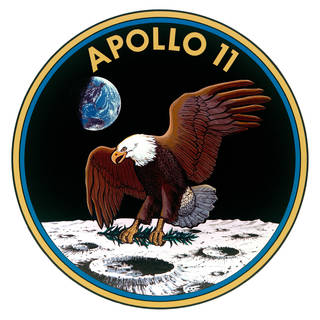
46 years today and tomorrow (as I post this), July 20 and 21st, 1969, are days that everyone my age or older remembers.
These are the days when the Apollo 11 spacecraft landed on the moon (the 20th) and when Neil Armstrong became the first human to walk on the moon (on the 21st).
This was an accomplishment of epic proportions and if you are old enough (and like me), you remember where you were watching those historic transmissions from space. But this post isn’t about history or scientific achievement. It is about what we as leaders can learn from the Apollo project, starting in 1961, over nine years before the historic day. Let’s look at some of those lessons and how you can apply them today.
Have a Big Goal. Few goals are bigger than landing a man on the moon and bringing him home safely (in less than ten years, no less). This goal was set before any American had even orbited the earth yet, and just seven days after we first launched a man into space. President Kennedy was maligned and ridiculed by some for setting the goal. It was “impossible.” Yet, it was achieved.
You will never reach the goal you don’t set. And if you set the goal too low, you may reach it, but will never achieve what you really want.
How big are your goals? Are they big enough to inspire and scare you and your team just a bit? If not, they might not be big enough.
Clearly Define the Goal. The goal as stated by President Kennedy in the famous “Man to the Moon” Speech was crystal clear. “Before the end of the decade, we will send a man to the moon and return him safely to earth.” This goal, while big as already mentioned, also meets the criteria of any one’s goal setting standards. The goal is crystal clear as is the timetable.
Are your goals as clear? Are they as understandable? Do they have specifics in terms of both target and timetable? If not, it is time to reassess them. If not, be prepared for failure in achievement of them.
Note: If you want to read more about the speech, go here If you want to listen to part of the speech, go here.
Have a Compelling Reason Why. The Apollo project is especially instructive in this area. Different people and groups had different reasons why reaching the moon mattered to them. Unless everyone has a compelling reason why, the fortitude, discipline and focus required to achieve a goal may eventually wane. Everyone had a reason, but they weren’t all the same reason. Leaders too often try to convince people of their reasons, rather than allowing people to find their own reasons to be engaged in and committed to the achievement of a goal.
Equally important is that while all the parties involved had reasons, few of them were about the goal (the moon) itself. For some, it was to “beat” the Soviets, for others to provide jobs or stimulate the economy, for others national pride.
Finding the purpose and “why” for achieving your goals is rarely about the goal itself. When we help people find that deeper meaning, the chances of goal achievement ratchet up quickly and permanently.
Build Commitment Early. Before President Kennedy set the goal, he consulted with experts. The scientists were involved. The Defense Department (where NASA was birthed) was involved. Researchers, politicians and others were on the team and on-board when the announcement was made.
How often have you built a coalition, and found commitment of others before you set and stated your goal? Time spent in doing this speeds up your process, but it also engages others as owners of the goal. As a leader, the more ways you can create ownership in the goal with your team, the more successful you will be.
Invest in Goal Achievement. While some initial estimates for the Apollo project were $7 billion, the final cost as close to $24 billion. Whichever number you think about, it is a big number. The President (and those who followed him) knew you couldn’t reach the goal without an investment – in this case, a very hefty one. Once the other four factors above were in place, it was easier to make the needed investments, but still never easy.
In your case it isn’t likely billions of dollars. It might not even be money at all. But an investment is still required both at the start and throughout the efforts to reach the goal. It might be time, re-prioritizing the work or something else. As a leader, are you willing and able to make those investment to improve the chance of ultimate success?
There are more lessons available, but these five are immediate, obvious and powerful. I encourage you to think about these five lessons and apply them for your team, organization, and yourself.

0 comments